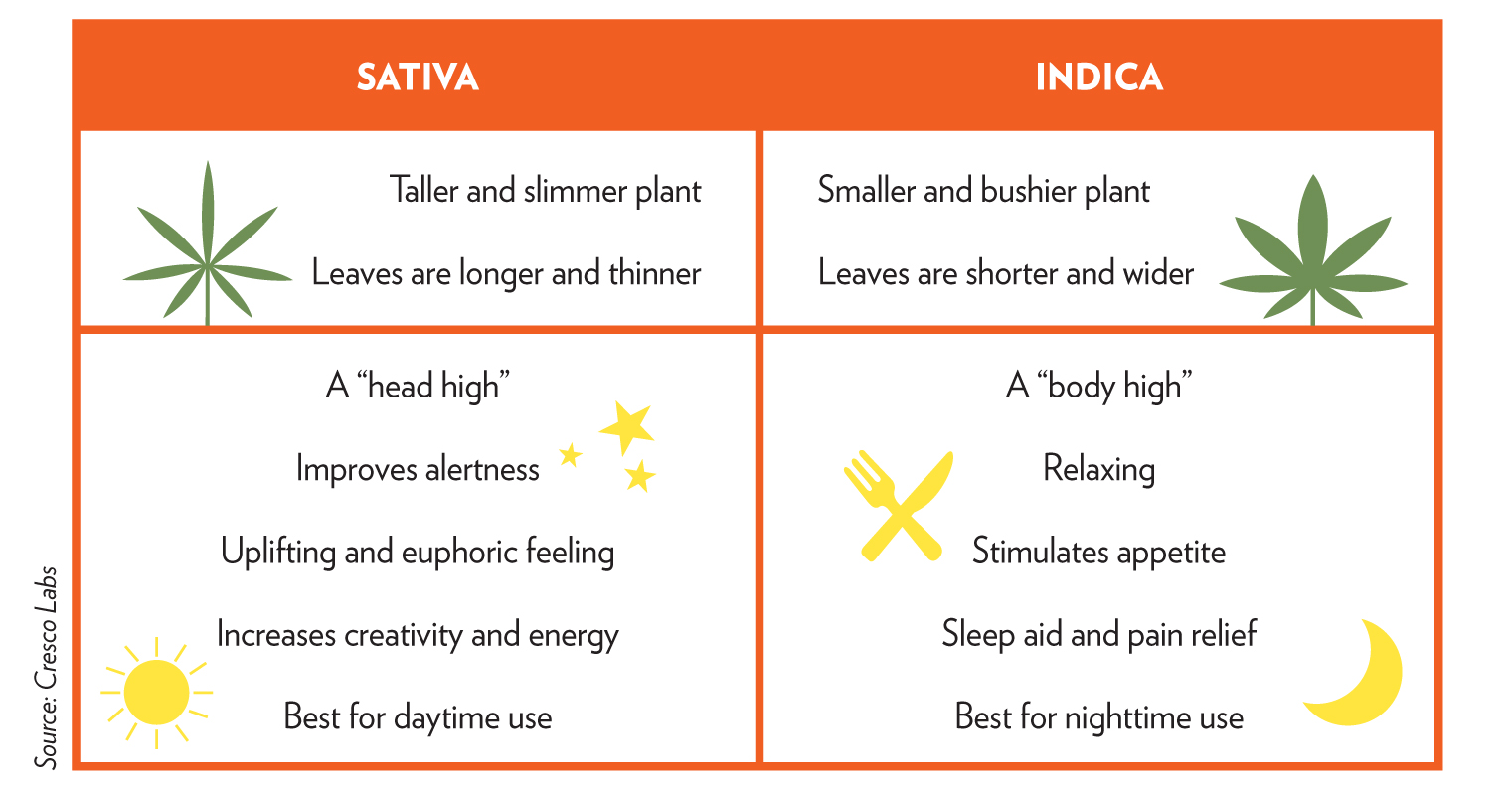Guide to Medical Marijuana in Ohio
An A-Z primer on what consumers need to know
Buds form on marijuana plants at Grow Ohio, a cultivator and processor business near Zanesville in Muskingum County. (Tim Johnson/Columbus Monthly)
High Hopes
The change is coming, bit by bit. Or should we say, bud by bud. Ohio’s brave new world of legal weed kicked off in January, a development in the works since former Gov. John Kasich signed House Bill 523 in June 2016, creating the state’s medical marijuana program. Dispensaries—the state-licensed retail outlets—have continued to spread throughout Ohio during the early part of 2019, bringing the gospel of medical ganja to Columbus and other parts of the state. And after three months of only dried marijuana flower, the first processed product, tinctures, hit the market in early April, adding a whole new layer to the program.
If all this change confuses you, don’t worry. You’re not alone. The rules of engagement are indeed new and complicated, as is the terminology—CBD, vaporizers, indica and sativa, to name a few examples of the new nomenclature. Questions abound: Who’s eligible for the program? How much does medical pot cost? What other developments could come next? And how will Ohio’s cannabis entrepreneurs navigate the continuing federal illegality of marijuana? To help you make sense of the new environment, Columbus Monthly has put together this alphabetical beginner’s guide to medical marijuana and the budding cannabis industry. It’s a new era in Ohio, filled with new products, new ideas and new businesses, and our primer should help you wrap your head around the changing scene, from A (allowed forms) to Z (zoning).
A is for Allowed Forms
Put away your bong and rolling papers. Ohio’s medical marijuana program debuted in January with a hard-and-fast rule: No smoking allowed. While patients can obtain cannabis in its classic flower format, state law prohibits the combustion of the product. Here’s what’s acceptable under the program.
Vaping
Instead of smoking bud, registered patients can use electronic vaporizers to heat up plant materials. The method, ideally, is simpler and safer: You insert a cartridge, press a button, suck in the vapor and blow it right out (no need to hold it in, as when smoking marijuana). Vaporizers come in desktop and portable models, with prices ranging from $15 to $600. They also work with oils and solid concentrates, both of which are allowed under Ohio’s medical marijuana program.
Topicals
These include lotions, creams and ointments, as well as patches for absorption through the skin. Topical products are typically infused with CBD—aka cannabidiol, a non-psychoactive compound found in cannabis plants—and patients are supposed to apply them on parts of their bodies experiencing pain, inflammation or other ailments.
Oral Consumption
Processed products such as edibles, tinctures and capsules were beginning to roll out in Ohio this spring after three months of only flower sales. Many patients find chocolates, gummies and other edibles more pleasant to consume, while capsules offer more convenience and precise dosages. Both forms can give longer-lasting relief, but they also take longer for the body to absorb, making them less beneficial to some patients, such as chronic pain sufferers in need of immediate help. The fastest-acting form, however, is tinctures, liquid medicine administered sublingually (under the tongue) with a dropper. Cindy Bradford, the co-owner of the Ohio Cannabis Co. dispensary in Coshocton, calls tinctures “the most effective way to hit your bloodstream.”

B is for Buddie
The Dark Knight was the hero Gotham didn’t need, but Buddie’s the one nobody ever wanted. He looked like a deformed cucumber who’d been training for the Arnold, and his expression emanated overconfidence—ironic given his role as the mascot for Issue 3, the marijuana legalization constitutional amendment that Ohio voters roundly rejected in 2015. One activist called Buddie “the worst idea in the history of marijuana politics.”

C is for CBD
You’ve seen them in online ads, if not in your local health store: oils, lotions, tinctures and a wide variety of treats labeled as CBD products that claim to calm you, help you sleep or reduce pain—even zap your acne and chill out your dog. CBD stands for cannabidiol, one of two primary active compounds of the cannabis plant included in Ohio’s medical marijuana program (the other is tetrahydrocannabinol, or THC.) Both substances stimulate the same receptors in the brain but in different ways. THC is the psychoactive one that distorts perception and makes you “high”—and sometimes anxious. CBD has a quite different effect, users say, producing a sensation of calm and relaxation. Those with medical marijuana cards will likely try products with varying levels of CBD and THC.
Neither substance, though, has been subjected to rigorous study due to their longtime prohibition. Actually, both are still illegal under federal law, but there’s been little effort to crack down on CBD consumer products because they’re usually derived from hemp, not marijuana. Hemp, recently legalized by Congress, does not produce the intoxicant THC. Or at least, not much THC.
The FDA has approved one CBD-based drug, Epidiolex, which is effective in treating rare and severe forms of epilepsy. But most scientists say research is needed to establish additional benefits of CBD, and even those who find it promising say the dosage in consumer products sold outside dispensaries is likely too low to have the promised results. Look for more research to follow.

D is for Dispensaries
A field guide to Ohio’s new licensed pot dealers
The Slow Rollout
If you’ve been waiting for one of Ohio’s newfangled medical marijuana dispensaries to come to your town, you’re not alone. The state’s legal weed era kicked off on Jan. 16 with the simultaneous opening of four dispensaries in three Ohio communities: Sandusky, Canton and Wintersville (which, bizarrely, has two outlets). Nine more were open by early April, with almost all of them in rural areas or small towns.
Some patients have been putting on the miles as a result. For nearly three weeks after opening in early March, the Ohio Cannabis Co. in Coshocton was the closest dispensary to Columbus patients. “There’s a good chunk of people coming from Columbus,” said Ohio Cannabis Co. co-owner Brian Wingfield in late March, about a week before Central Ohio got its first dispensary, Terrasana Labs on Grandview Avenue.
Columbus Pot City
Eventually, Columbus should end up with more dispensaries than any other city in Ohio. (The city with the second-highest total will be Licking County’s Newark, with three licenses.) Though none have opened yet, Columbus also has by far the most provisionally licensed marijuana processors, which turn cannabis plant material into oils, tinctures, gummies and other man-made products. Seven processors are supposed to open in Columbus, more than twice the second-highest total, Dayton’s three.
Cash is King
Dispensaries tend to resemble an Apple store with tighter security. Patients must show their ID and a state-issued medical marijuana card before being escorted to the dispensing rooms, where they can talk with “patient care advocates” about their needs, health conditions and the products for sale, which include shredders, vape pens and other accessories, as well as colorfully named lines of weed (Fremont Fog, Grapefruit Sour Dream, Yellow Springs Kush) with differing levels of THC and CBD. “This isn’t really a take-a-pill-and-get-rid-of-your-cold kind of situation,” says veteran potrepreneur Andy Joseph, founder of Ohio Grown Therapies, which is opening a dispensary in Newark. “This is more of a journey.”
If you want to take something home, however, be sure to bring cash. Insurance doesn’t cover medical marijuana, and dispensaries don’t take credit cards, as banks are reluctant to work with the nascent cannabis industry as long as the federal government still considers marijuana an illegal drug. Prices in Ohio dispensaries tend to be higher than in other states with more mature legal weed programs. In late March, prices at Ohio Cannabis Co. in Coshocton were in the $35–$55 range for one-tenth of an ounce of dried flower.
MAP INFO
Columbus Dispensaries
- Terrasana Labs, 656 Grandview Ave., West Columbus, opened March 26
- The Botanist, 111–115 Vine St., Arena District, expected to open in May
- Harvest Dispensaries, 2950 N. High St., Clintonville, building plans approved, opening date unknown
- Bloom Medicinals, 1361 Georgesville Road, West Side, building plans approved, opening date unknown
- Verdant Creations, Johnstown Road and Cassady Avenue, East Side, construction expected to start soon

E is for Economic Impact
A budding industry, by the numbers
34
U.S. states have approved medical or recreational marijuana since 1996, according to the National Conference of State Legislatures
24,556
medical marijuana patients registered in Ohio before March 31, according to the State of Ohio Board of Pharmacy
$2.9 million
total Ohio medical marijuana sales from January through March, according to the Ohio Board of Pharmacy
$226 million
projected Ohio medical marijuana sales in 2021, according to BDS Analytics
62 percent
of Americans support marijuana legalization, according to the Pew Research Center
$4 billion
investment from brewer Constellation Brands, the maker of Corona and Modelo, into Canadian cannabis company Canopy. Constellation CEO Bill Newlands predicts the global marijuana market “could be a $200 billion business in very short order,” according to The Wall Street Journal.
$651 million
market capitalization in early April for fledgling Columbus cannabis retailer Green Growth Brands, which went public on the Canadian Securities Exchange in November. The company is already more than twice as valuable as Columbus clothing chain Express.
F is for Farm Bill
If you’ve heard that the 2018 federal farm bill legalized CBD, look a little deeper. The bill legalized hemp production—thanks to favorable conditions for the crop in Kentucky, home of Sen. Mitch McConnell. Hemp, a form of cannabis, was previously lumped with marijuana, even though its low THC content ensures it won’t get you high. Hemp contains plenty of CBD, though, and most of the anxiety-reducing tinctures and whatnot available today are derived from hemp. But to the feds, while the crop is now legal, CBD oil remains a prohibited substance. And don’t count on producing CBD from homegrown hemp: The feds require a license—and at press time, hemp production was still illegal under Ohio law.
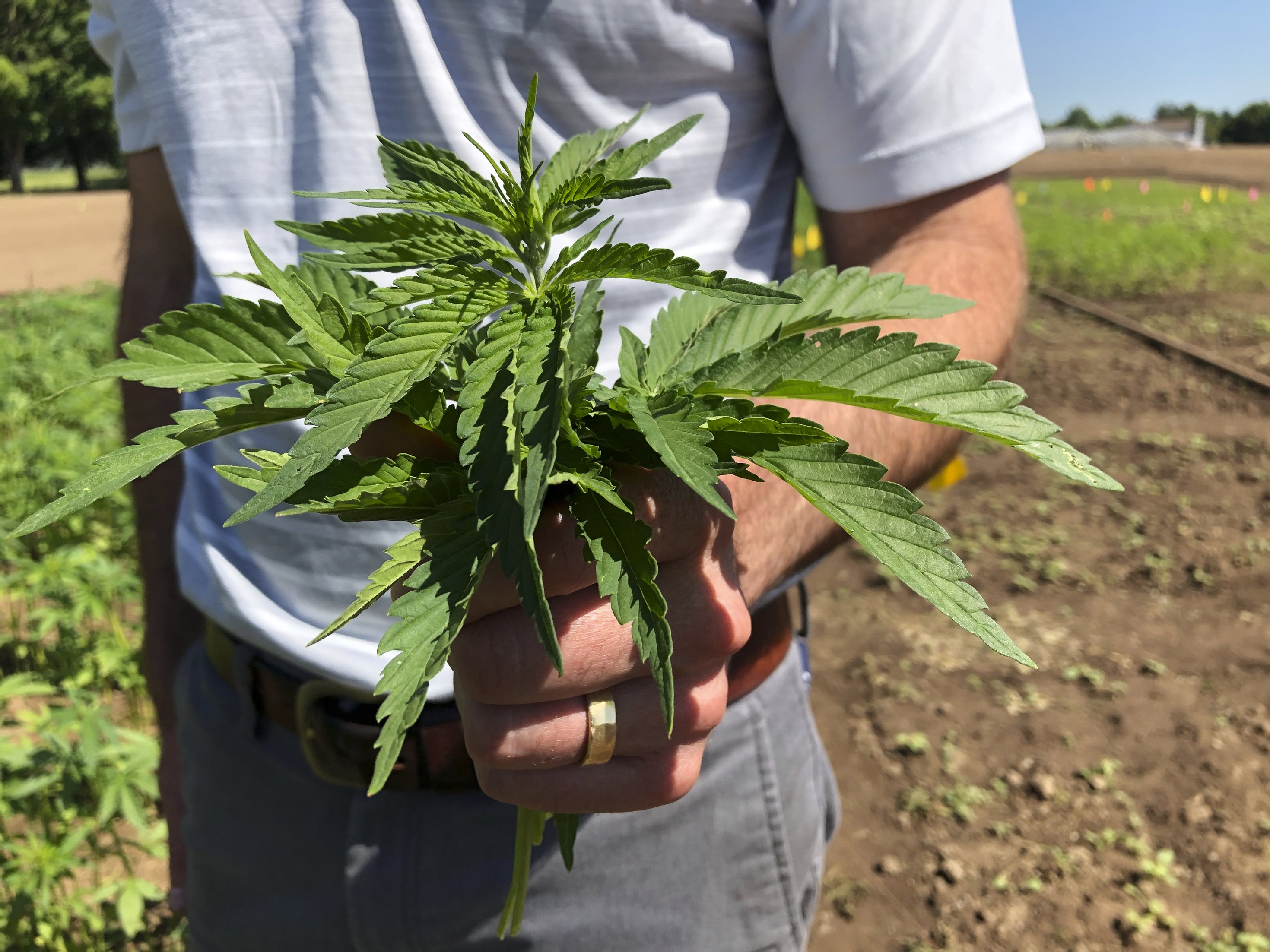
G is for Green Growth Brands
In just over a year, Columbus cannabis retailer Green Growth Brands has made a huge splash. Since it was founded in March 2018 with the financial backing of the Schottenstein family, the company has gone public in Canada, acquired marijuana stores and dispensary licenses in Nevada, Massachusetts and Arizona, and formed strategic partnerships with DSW, Simon Malls and even golfing legend Greg Norman.
Green Growth Brands CEO Peter Horvath likens today’s cannabis gold rush to the Wild West, with new players enjoying outsized valuations as investors eagerly jump into a burgeoning global industry that investment banker Jefferies Group estimates could reach $130 billion in a decade. “That’s just crazy,” says Horvath, whose company includes more than 100 full-time employees in Columbus. “I mean, $130 billion is the size of spirits and wine combined today.”
Horvath calls that market expansion unprecedented—and he and his colleagues at Green Growth Brands don’t want to be left behind. In the coming months, the company expects to roll out up to 300 kiosks in malls and DSW stores that sell topical products derived from CBD. What’s more, shareholders of the Canadian cannabis company Aphria have until May 9 to consider Green Growth Brands’ hostile takeover bid.
Horvath predicts plenty of volatility in the coming years. “There probably is a bubble,” Horvath says. “Not probably—I’m stating the obvious. The industry has very high values, which means there’s always the chance that this afternoon, next week or five years from now, cannabis valuations have a correction.” He says Green Growth Brands can survive that inevitable shakeout thanks to its retail expertise. A former executive at American Eagle, Victoria’s Secret and DSW, Horvath has recruited a team of leaders to Green Growth Brands also with deep experience in Columbus’ renowned retail proving ground. In comparison, other cannabis retailers aren’t as steeped in marketing, e-commerce, store design and brand development. “They are real estate guys,” Horvath says. “They’re dealmakers. They are people from an investment background. Virtually nobody comes at it from an operating background. And that’s one of the reasons we’re winning. And will win.”
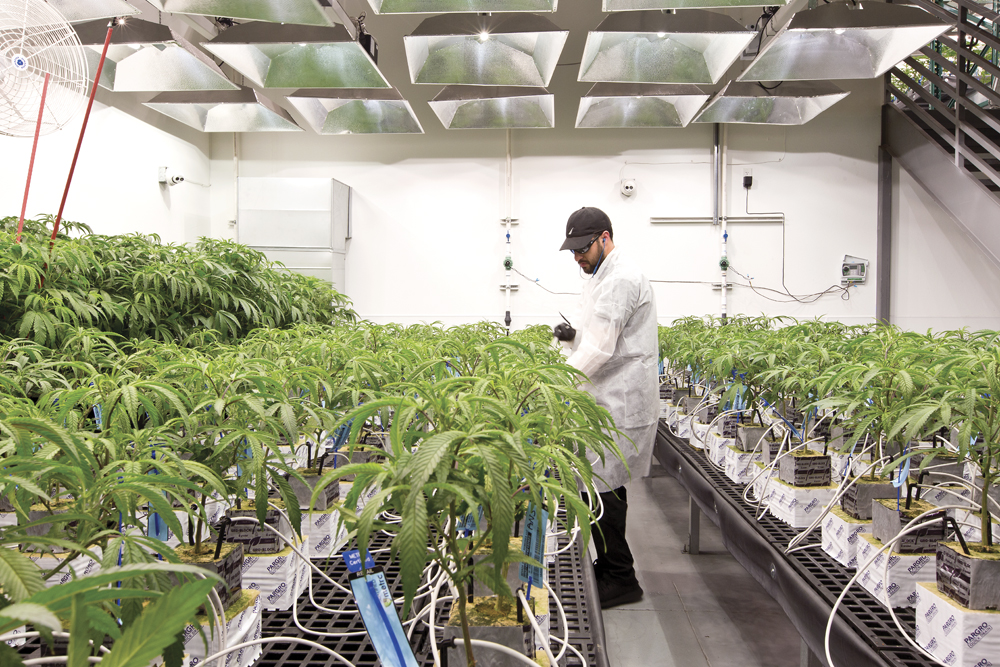
H is for Hocking College
It’s tempting to joke about a college where students can major in cannabis, but at Hocking College, a two-year public school in Athens County, a new cannabis lab program could position students for good jobs. Hocking was one of two public colleges that received licenses from the state to test medical marijuana for cannabinoid potency as well as potential contaminants and other qualities. (The other, Central State, has not opened a lab; three private labs were also licensed, with more expected.) The new lab at Hocking will bring revenue to the college while students who opt for the cannabis lab major will get experience in a field where the college projects 220 percent growth in the coming year. College marketing director Tim Brunicardi says Hocking is receiving applications from lab tech hopefuls across the country.
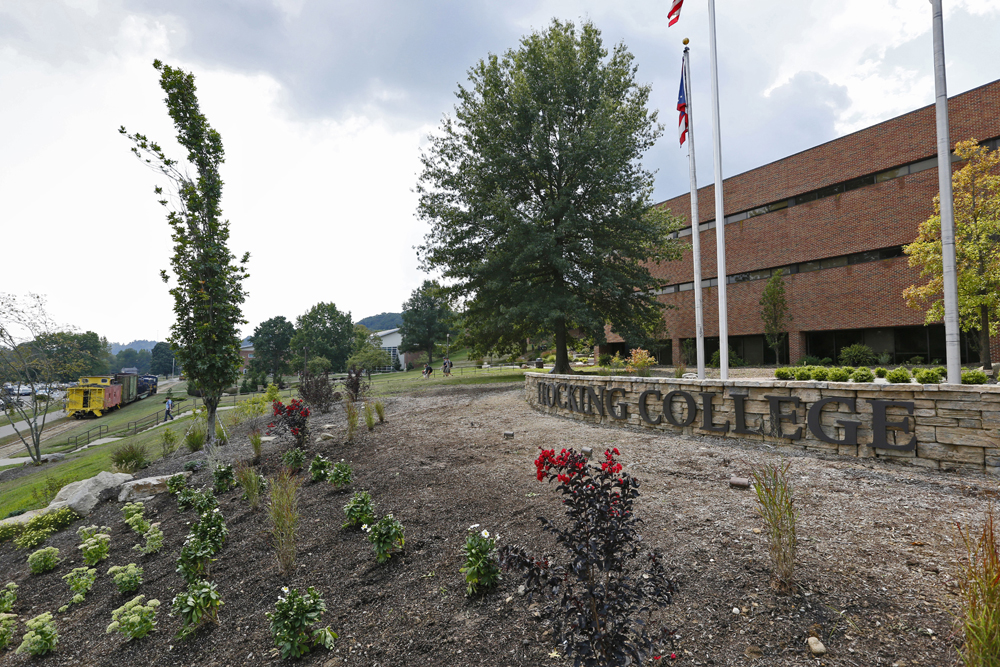
I is for Investors
Mainstream money flows into Columbus’ cannabis gold rush.
Scotts Miracle-Gro
The Marysville lawn-care company was the first major Central Ohio corporate player to bet big on the fledgling legal marijuana business. Through its subsidiary Hawthorne Gardening—led by Chris Hagedorn, the son of Scotts CEO Jim Hagedorn—the company has spent $1 billion on acquisitions since 2014 to build its business serving cannabis cultivators.
The Hondros Family of Companies
The family behind Hondros College obtained licenses for five dispensaries in Ohio, including one near John Glenn Columbus International Airport. Patriarch John Hondros, a skeptic of legal weed at first, changed his tune as he followed the progress of House Bill 523 and learned about the medical benefits of cannabis, says Corey Poches, managing partner of the family’s Verdant Creations dispensary chain.
Battelle
The Columbus research giant is partnering with Canadian marijuana producer Canopy to conduct research on its products, including dried cannabis and gel capsules. “As more states, including Ohio, approve the use of medical cannabis to help individuals with certain illnesses, we believe that Battelle will be able to apply our rigorous and independent research and analysis to advance knowledge and improve safety in what is essentially uncharted territory,” said Battelle CEO Lou Von Thaer in a November 2018 press release announcing the Canopy partnership.
The Schottensteins
Not only are they backing the upstart Columbus cannabis retailer Green Growth Brands, the family that controls American Eagle, DSW and Value City Furniture also aligned with an affiliate of the Canadian cannabis company Aphria to secure a dispensary license in the Dayton area and a processor license in Columbus. Later, Green Growth Brands launched a hostile takeover bid of Aphria.

J is for Joseph, Andy
A Q&A with the founder of Apeks Supercritical, a manufacturer of machines that extract oil from cannabis plants, and Ohio Grown Therapies, one of two vertically integrated Ohio marijuana companies.
Some people complain that Ohio’s marijuana dispensaries are concentrated in certain areas. Does that have to do with the moratoriums that many local governments have placed on pot?
Oh, without a doubt. … Columbus was open, but almost every single suburb was not—New Albany, Bexley, Worthington, Upper Arlington. … They all had some kind of ban or moratorium, or even worse, like Delaware County and Delaware city, for instance, they were aggressively pushing people out.
Do you think they’ll reconsider that approach as the industry matures?
Yeah, there’s no question. There’s a marijuana bogeyman kind of thing going on out there, and once the program’s up and running and the sky hasn’t fallen, then yeah, many of these communities will start to try to entice businesses. … It really stems from the federal illegality. Most people tend to use that as the excuse.
You don’t think that’s the primary reason?
No, absolutely not. The primary reason is undereducation, or lack of education. Why did Johnstown come out almost a year ahead of anybody else and be so willing and so open and accepting to the idea, right? And it’s because they had me to educate them. We went through this entire process of what the industry is, what it isn’t, what the real risks are when we were building Apeks Supercritical in Johnstown two or three years before. … There’s nothing special about me, I just happened to be there already, and so if other communities like Delaware, for instance, had had somebody like me available, then yeah, I think it would have been a completely different story.
Do you think recreational marijuana will be legalized here?
Without a doubt.
Do you have any sense of what kind of timeline that would be?
Purely speculative, I would not be surprised if there’s an initiative—you know, a constitutional amendment—on the 2020 ballot.

K is for Kids
Many are familiar with Nancy Reagan’s “just say no to drugs” campaign. Now, some parents and doctors are changing their tune when it comes to medical marijuana for children. To be sure, there are still scientific concerns about young people using marijuana to get high. A 2018 University of Montreal study, for instance, indicated that teen brains are more vulnerable to marijuana than they are to alcohol. Still, the FDA approved the CBD-based drug Epidiolex—which does not produce a high—to treat two rare, debilitating and often treatment-resistant forms of epilepsy, Lennox-Gastaut syndrome and Dravet syndrome, in patients as young as 2 years old. This approval came last June after a multiyear study of the drug conducted at 30 centers in the U.S. and Europe, including Nationwide Children’s Hospital, which treated and studied more patients than any other site. The study found that about one-third of the participants who received the drug saw seizures reduced by half. Epidiolex is the first nonsynthetic, marijuana-derived product approved for prescription in the U.S.
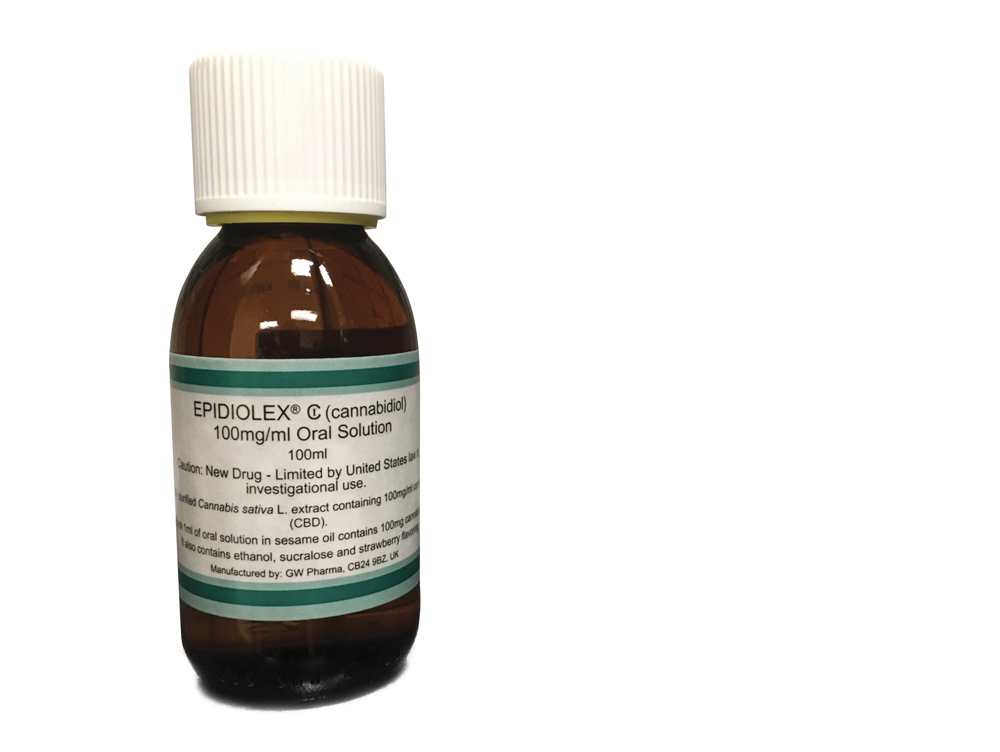
L is for Legislation
Three more federal bills—and one Ohio proposal—that could strengthen the cannabis industry
Ohio Senate Bill 57
Piggybacking on the recent federal farm bill, Ohio senators in late March unanimously approved this proposal that legalizes industrial hemp and CBD sales.
The SAFE Banking Act
The U.S. House Financial Services Committee voted 45-15 in late March to advance this bill, which prevents financial regulators from punishing banks for working with cannabis businesses.
The STATES Act
This bill eliminates some of the uncertainty around the U.S. cannabis industry by removing the threat of federal legal intervention in states that have chosen to legalize medical or recreational marijuana.
The Veterans Equal Access Act
Democratic U.S. Rep. Earl Blumenauer of Oregon reintroduced this proposal in March that expands medical marijuana access to include military veterans with chronic pain and PTSD, which are already included in Ohio’s program.
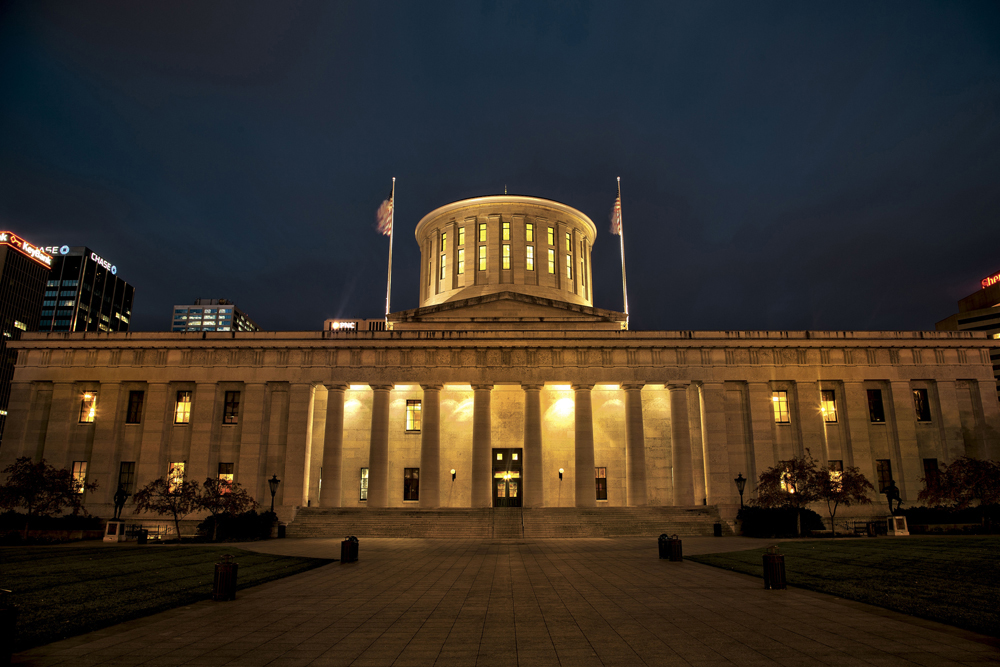
M is for Medical Marijuana Control Program
Ohio’s new marijuana regulator covers a lot of terrain. With duties split among three government agencies—the Ohio Department of Commerce, the State of Ohio Board of Pharmacy and the State of Ohio Medical Board—the Medical Marijuana Control Program handles everything from growers to doctors to lab scientists. Commerce officials oversee the cultivators, processors and testing laboratories. The pharmacy board manages dispensaries while also registering patients and caregivers and considering new forms of medical marijuana (a petition for nasal spray is under review). The state medical board certifies physicians to recommend marijuana, while also weighing whether to add to the current 21 qualifying conditions (new ailments under consideration are anxiety and autism spectrum disorder).

N is for Ninety Days
Patients can possess no more than a 90-day supply under the state’s medical marijuana law. How much that constitutes, however, wasn’t precisely established until 2017, when regulators set the three-month limit at 6 ounces of plant material or processed products with equivalent THC, one of the more restrictive guidelines in the country. The supply is also weighted according to THC level, which has caused confusion among patients in the early months of the program.

O is for Ohio Rights Group
In the state’s medical marijuana landscape, think of the Ohio Rights Group as the modern pioneers. After forming in 2010, ORG advocated diligently through multiple ballot initiatives and rounds of signature-gathering, and the movement slowly gained traction. In 2015, ResponsibleOhio’s failed Issue 3, with reluctant support from ORG, helped get the state legislature’s full attention. ORG was touting yet another ballot initiative when House Bill 523 passed in May 2016.
ORG’s members are proud that their work culminated in marijuana flowing to patients statewide, says Mary Jane Borden, the group’s co-founder and treasurer. “There are no arrests. There’s no prosecution. There’s no SWAT raids. There’s no fines, fees. There’s no incarceration of those people,” Borden says. “This is beautiful stuff.”
Still, she’s frustrated by the program’s politics, pointing to a cultivation licensing process beset by errors and what she sees as tepid support at best from consecutive Republican governors. But Borden reserves her harshest criticism for the appointment of Marcie Seidel, who sits on the state’s Medical Marijuana Advisory Committee and is also the executive director of the Prevention Action Alliance, formerly the Drug Free Action Alliance, which publicly battled ORG and legalization efforts for years. Seidel’s position with PAA may present a conflict of interest with her role making recommendations on implementation of the marijuana program. “She opposed it vociferously,” Borden says.
As for ORG, the group is now focusing on marijuana education and advocating for Ohio Senate Bill 57, which would decriminalize hemp and license cultivation.

P is for Processors
The chemists and food scientists of the state’s new medical marijuana system, processors turn flower into products such as edibles, tinctures and oils that have proven popular in other states and appear to be in high demand among Ohio patients. “I think that’s what’s really going to start drawing people in,” says Brain Wingfield, co-owner of the Ohio Cannabis Co. in Coshocton. In early March, before processed goods were available in Ohio, he was forced to turn away a customer from Marysville who wasn’t comfortable vaporizing marijuana flower because of her asthma and emphysema.
That changed on April 3, when Muskingum County cultivator and processor Grow Ohio shipped the first processed products, 30-milliliter bottles of tinctures, to the Ohio Cannabis Co. and two other dispensaries, the Botanist locations in Canton and Wickliffe. In early April, Josh Febus, director of sales for Grow Ohio, was working to get the tinctures—which come in two different strengths and cost $80 and $120, respectively, at Ohio Cannabis Co.—to the 10 other operating dispensaries in the state. He also predicted that two other products, oil syringes and gummy candies, should become available in the coming weeks, followed by soft-gel capsules and topical creams in May. All the products are manufactured under Grow Ohio’s Butterfly Effect brand. “We’re ready to go,” Febus says. “We’ve dedicated all our flower to processing at this point.”
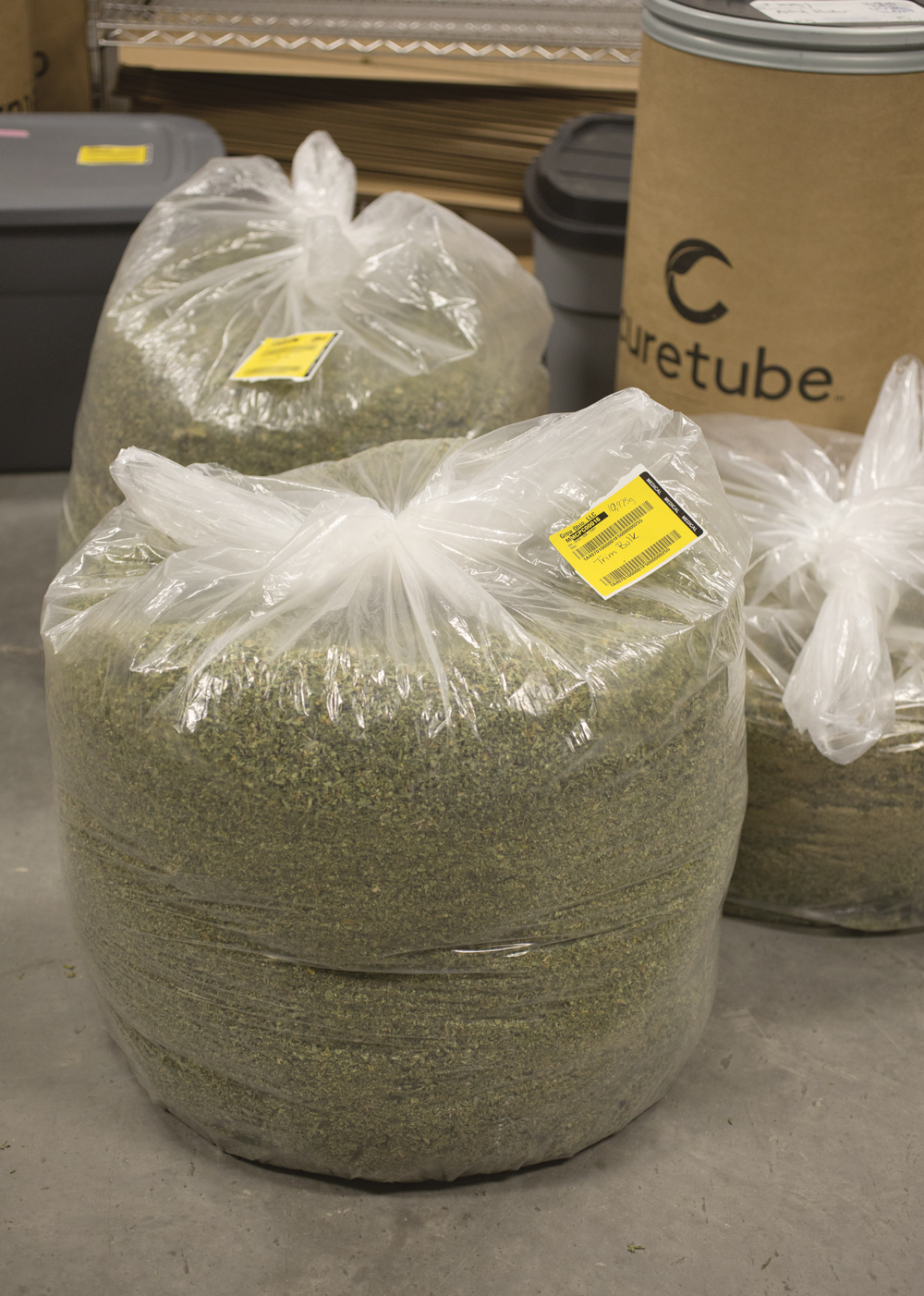
Q is for Qualifying Conditions
Top 10 conditions among medical marijuana patients in Ohio
Conditions and
number of patients*
Chronic pain: 10,910
Post-traumatic stress disorder: 2,622
Fibromyalgia: 1,973
Cancer: 1,082
Spinal cord disease or injury: 998
Epilepsy or another seizure disorder: 555
Crohn’s disease: 445
Multiple sclerosis: 387
Traumatic brain injury: 366
Hepatitis C: 327
Source: State of Ohio Board of Pharmacy (data through early February)
*Some patients are registered with multiple conditions.
R is for Recommendations
To qualify for medical marijuana, you must visit a doctor, but you won’t get a prescription. Instead, doctors who have passed an online certification course—448 in Ohio at press time—can offer a “recommendation” for medical marijuana. Based on that recommendation, and after receiving a $50 fee, the Ohio Board of Pharmacy will issue a medical marijuana card.
Those under 18 must also have an adult caregiver apply for a card. A recommendation, which does not specify a dosage, must be renewed after one year.
At this point, most family physicians won’t issue recommendations. Patients can find a licensed marijuana doctor at a medical marijuana clinic, where they will pay around $200 for a consultation. A physical is usually not required; the doctor will, instead, interview the patient and review their medical records to see if they have any of the 21 qualifying conditions listed in the legislation. These include Crohn’s disease, HIV, Parkinson’s, fibromyalgia, cancer, PTSD and chronic or intractable pain.
“Chronic pain is the most common condition we are seeing, often lower back pain,” says Dr. Louis Bowman, one of two osteopathic physicians with Ohio Green Team, which has issued medical marijuana recommendations to more than 1,000 Ohioans since it opened its first clinic in Upper Arlington last August.
Ohio Green Team co-owner Ryan Brown speaks of the possibilities of medical marijuana with an evangelistic fervor. Brown’s father died from an opiate addiction, and he would like to see marijuana available as a safer alternative for those suffering pain. He says it’s easier to get a recommendation than most people think. OGT staff will even help locate medical records for those with old injuries or missing files. “If you are telling the truth, you will get the card,” says Brown.

S is for Strains
Dispensary menus can intimidate the uninitiated. The exotic names, unfamiliar lingo, varying prices and odd tasting notes (“citrus, fruity, diesel”) are enough to drive almost anyone into a new form of reefer madness. The menus get considerably less confusing, however, if you understand the two main subspecies of cannabis—indica and sativa. Most dispensaries organize their strains into these two categories, along with hybrids, new breeds that combine qualities from both indica and sativa plants.
T is for Tourism
Let’s say you don’t have a qualifying condition to get medical marijuana in Ohio, but you still want to partake. Ten states, plus the District of Columbia and Canada, offer recreational cannabis, and marijuana tourism is a growing niche in these areas, as evidenced by such cannabis-friendly websites as budandbreakfast.com.
The two closest legal-weed areas—Michigan and D.C.—both have a catch: While cannabis is legal to possess and consume, direct sales are still unavailable. Instead, delivery services (such as Canamelo or Green Label Grinders in D.C.; Smoke’s Chocolate or CannaMich in Michigan) offer a loophole. Customers order an exorbitantly priced ancillary product—think: T-shirts, snacks, drinks, toys—and receive a free gift of ganja with their purchase, appropriately portioned for the amount they paid.
Canada legalized pot nationally last year, but local laws vary widely based on city and province. Travel services, such Canada High Tours and Canna Tours, help travelers navigate the web of local rules.
Kush Tourism has information on laws in the U.S. and Canada, as well as dispensaries, lodging and tours in select U.S. states. Examples include the Kush Tour in Seattle ($150), offering a behind-the-scenes look at retail sales, glass blowing, grow operations and more; Alaskan Cannabis Culture and Medicine in Juneau ($150); and the Potlandia Experience in Portland ($100/hour).
Of course, there are myriad independent tour groups, too. In California, the Happy Travelers Wine-and-Weed Tour ($139) takes you on a six-hour adventure through wine country; boxed lunch is included, but tastings and bud cost extra. Or you can book a ride with Colorado Cannabis Tours ($39 and up) in a weed-friendly party bus or limo—complete with sealed-off driver’s compartment, for safety—as you explore Denver.
On the East Coast, dispensaries and tourism are a bit behind—but probably not for long. Maine Marijuana Tours bills itself as the first marijuana tourism service in the state. In Massachusetts, private social clubs are starting to open, giving members a place to puff with friends and strangers alike.

U is for Uncertainty
With marijuana finally in stores, Ohio joins the legal limbo occupied by 33 other states trying to operate regulated marketplaces under the shadow of a fickle federal prohibition.
Andy Joseph, who plans to open his first Ohio Grown Therapies dispensary in Newark this June, says entering the industry means running the risk—albeit infinitesimal—of federal prison. And that’s the least-pressing problem. The IRS won’t allow company owners to deduct ordinary business expenses, and most banks won’t offer services. Mary Jane Borden of the Ohio Rights Group says Huntington shut down the advocacy organization’s bank accounts despite the fact that its involvement is only political. The only fix is at the federal level, she adds—unlikely given the Trump administration’s harsh rhetoric.
The uncertainty makes doing business more challenging and expensive, Joseph says, but he has advice for joining the green rush: Accept the illegality for what it is and then operate like any other company.

V is for Vote
A group calling itself Ohio Families for Change started circulating a petition for a new recreational marijuana constitutional amendment last year, but supporters aren’t pursuing the amendment anymore. “They started their campaign for the right reasons—individual freedom and consumer protection—but without the built-in profit advantage that some competing marijuana amendments offer, it’s just too challenging to raise money for a campaign,” former campaign consultant Jonathan Varner says in an email, referring to the unsuccessful but well-funded Issue 3 campaign in 2015 that would have provided an oligopoly to its financial backers.
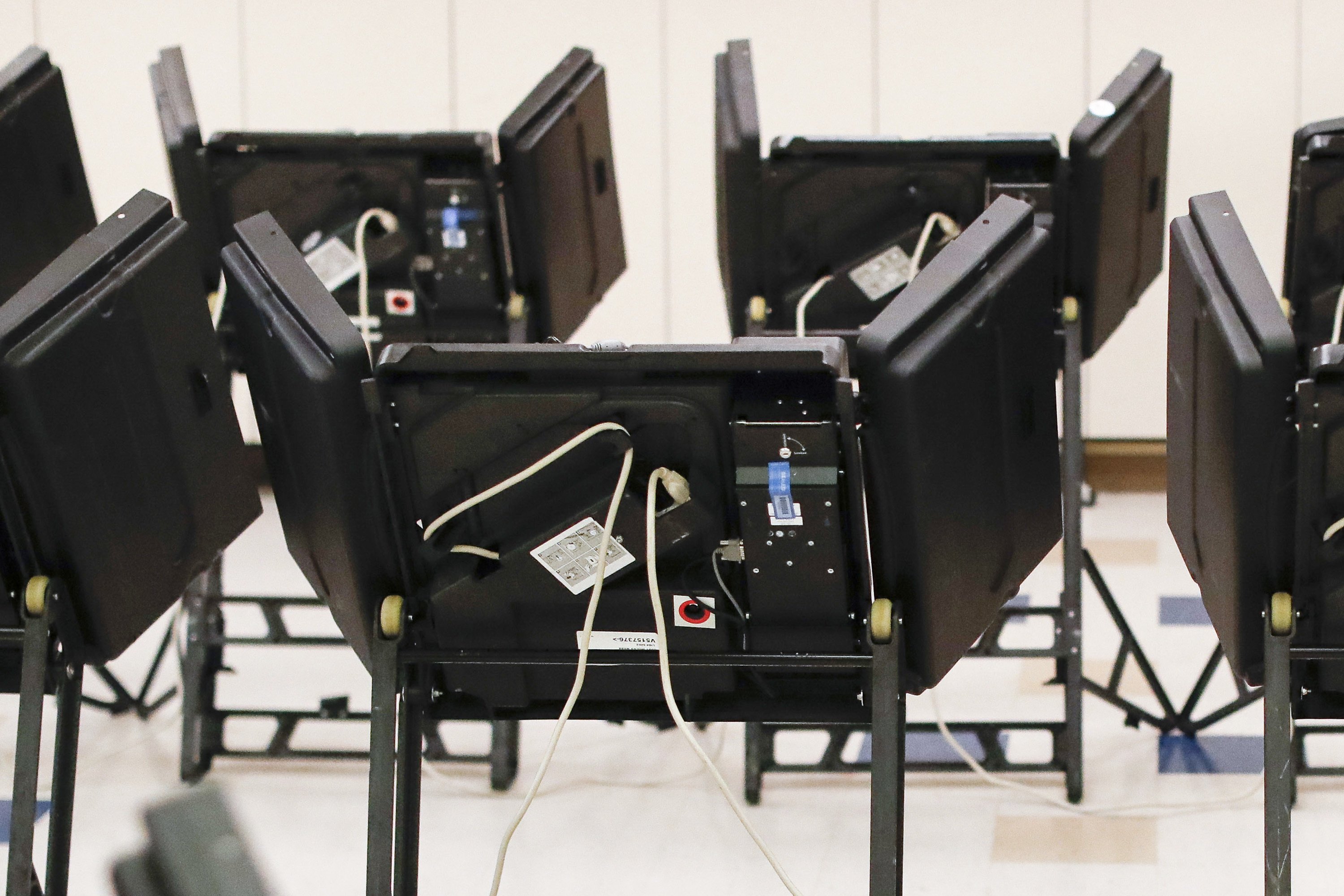
W is for Workplace Issues
Legal medical marijuana has left many zero-tolerance workplace managers scratching their heads about how to treat those who may now use marijuana for legitimate medical conditions,says employment lawyer Michel Jendretzky. Certain employers, she points out, must continue to maintain a drug-free workplace under the rules of federal or state funding. But others may also continue testing; they may even, legally, deny jobs to those with a medical marijuana card who test positive.
For many employers, however, there’s little reason to do so; the tests only show that a person has THC in their system, not that they are high on the job. Many medical marijuana users can use CBD while working and restrict more intoxicating THC use to off-work hours. Employers are free to fashion their own policies, creating accommodations for medical marijuana users or imposing stricter rules on those in safety-sensitive jobs. Excluding all employees who use medical marijuana could create a competitive disadvantage for some businesses.
In light of the changing landscape, Jendretzky says many employers would be wise to reconsider testing. Eventually, she says, “Somebody in Ohio is going to sue when they are turned down or fired because of testing positive.” Such a lawsuit could force the employer to prove they did not discriminate on the basis of a disability or medical condition.
Should medical marijuana users tell their employers? “That’s a hard one,” Jendretzky says. “Right now in Ohio, it’s very employer-friendly. … The burden falls on the employee to make sure they are in a workplace that will accommodate it.”
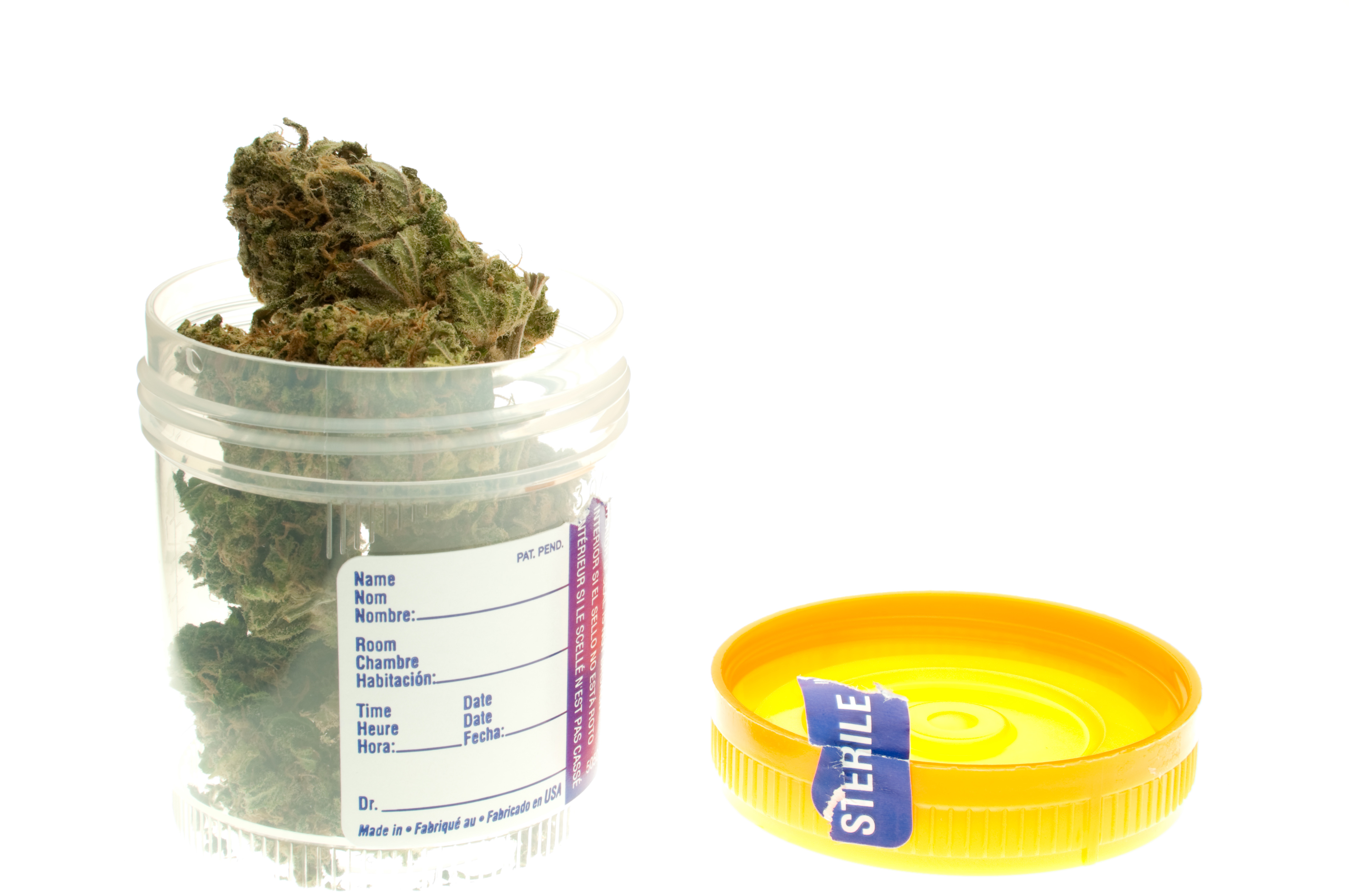
X is for X-Files
A strain of marijuana is named for this TV series—and it’s not the only odd tribute you can find on a dispensary menu. The website Leafly, the Yelp of weed, is packed with reviews of pop culture-inspired legal marijuana products. Here are five examples, from the dank to the dumbfounding.
Willie Nelson
Country music’s king of chronic is probably smoking his namesake right now.
Carl Sagan
The Cosmos star was an ahead-of-his-time cannabis activist.
X-Files
It’s doubtful Mulder or Scully would partake; the Cigarette Smoking Man is another story.
Connie Chung
Fun fact: Talk show host Maury Povich once flew to Washington state to try this strain inexplicably named after his wife.
C3P0
The uptight android would never touch the stuff—not even at an Ewok rager.

Y is for Yuko, Kenny
It’s hard to call any Democrat at the Statehouse influential. But the state senator from suburban Cleveland has been a staunch advocate for medical marijuana longer than anybody else in the General Assembly. And in 2016, he helped raise bipartisan support for Ohio House Bill 523, which may not have squeaked through the Senate in an 18-15 vote without him.
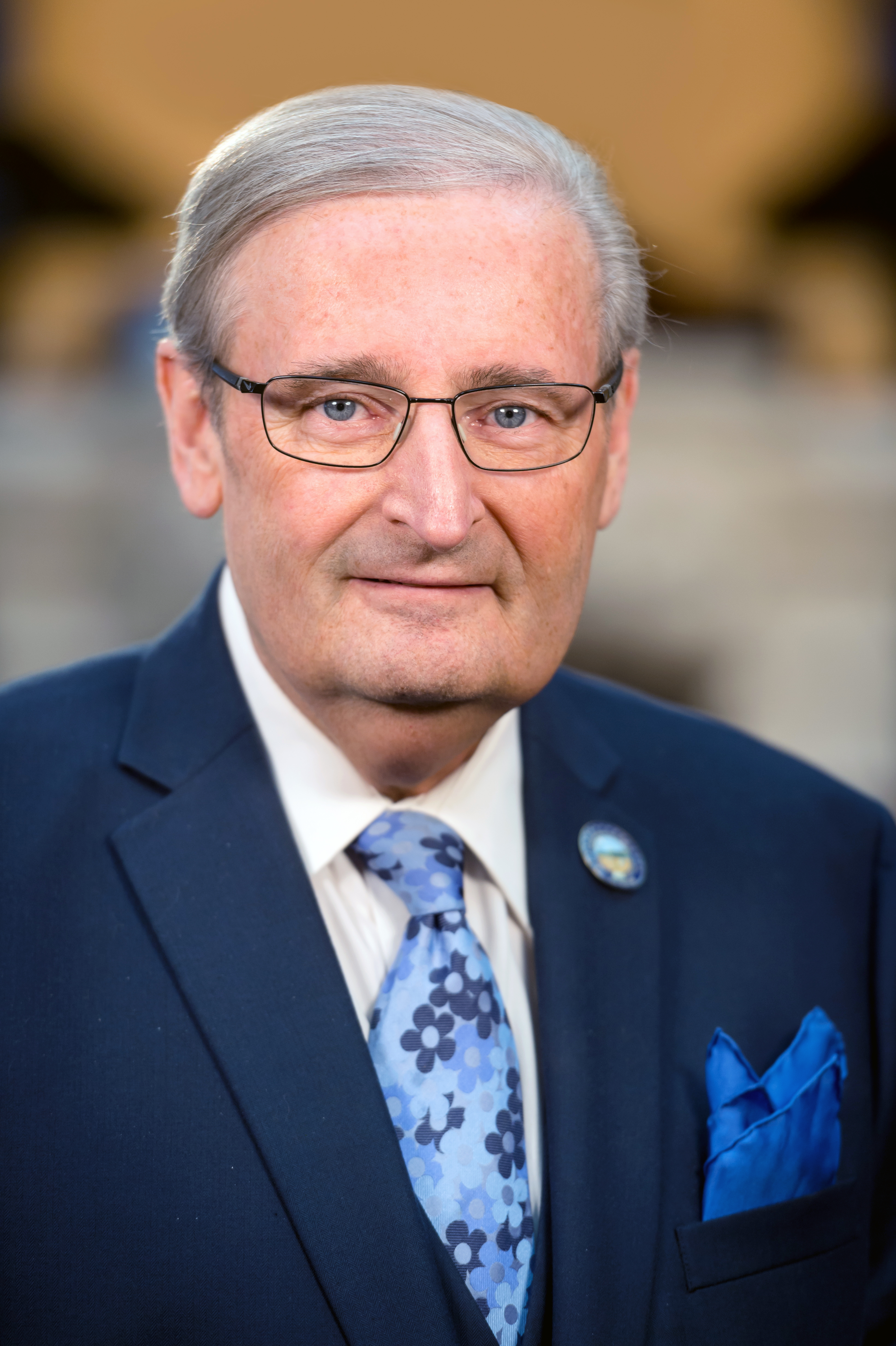
Z is for Zoning
Central Ohio communities didn’t roll out the welcome mat for Ohio’s new medical marijuana cultivators, processors and dispensaries. As the new law began to take shape, several Columbus suburbs—including Dublin, Worthington, Canal Winchester and New Albany—banned medical marijuana businesses, while others enacted moratoriums of six to 18 months.
Columbus, however, took a different approach. Under Mayor Andy Ginther, the city saw the emerging industry as an economic development opportunity, as well as providing a useful medical service to patients in need. For marijuana businesses, Columbus became the county’s only game in town, attracting five dispensaries and seven processors. “After doing a lot of research into other states that have medical marijuana, the challenges that were voiced and the concerns that were voiced didn’t pan out,” says Anthony Celebrezze, assistant director of Columbus building and zoning services.

Like what you’re reading? Subscribe to Columbus Monthly.
Sign up to receive Columbus Monthly’s e-newsletters, Copy & Taste and Top Reads! You’ll get our top reads of the week and our dining newsletter, plus exclusive notices about special events and contests.


